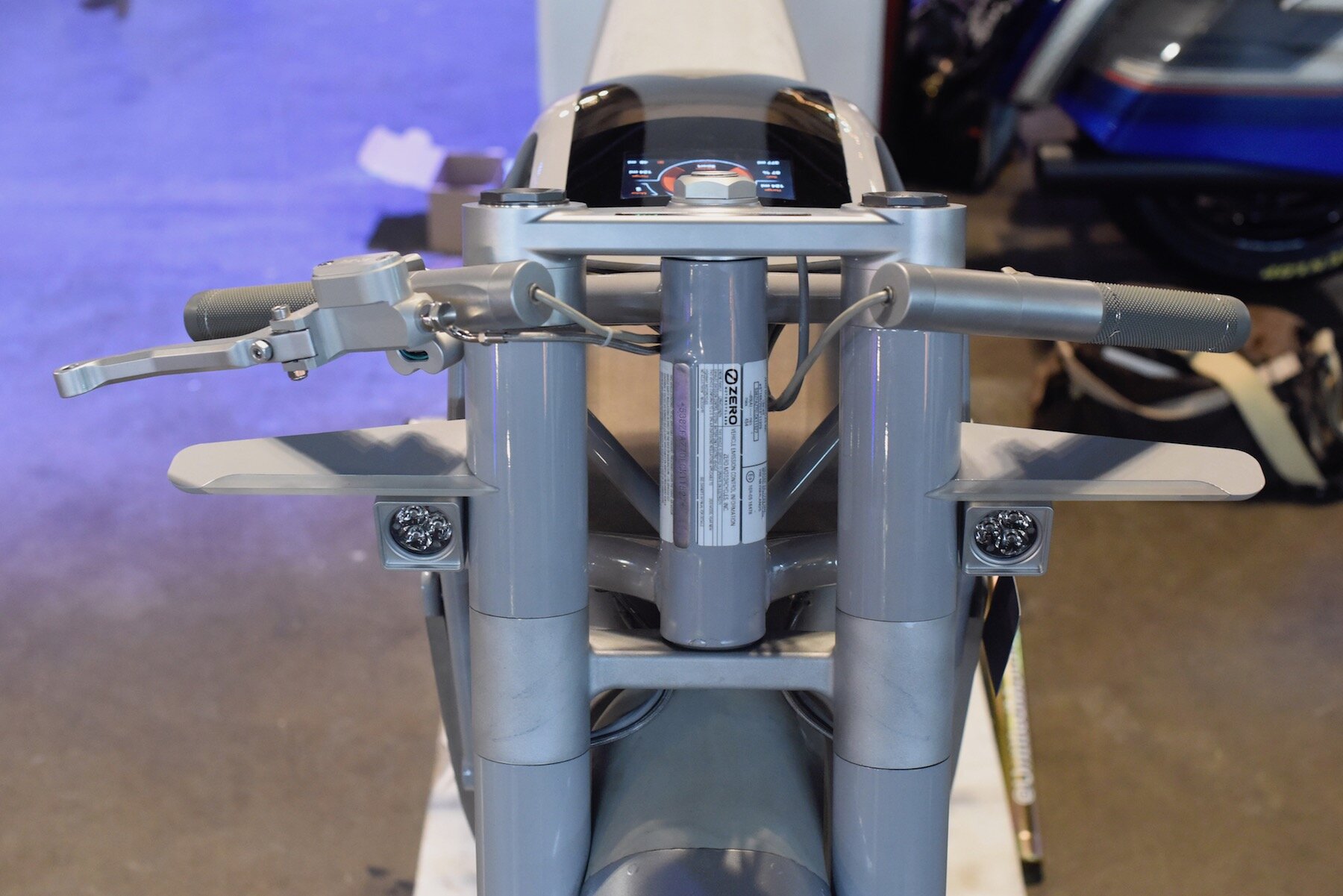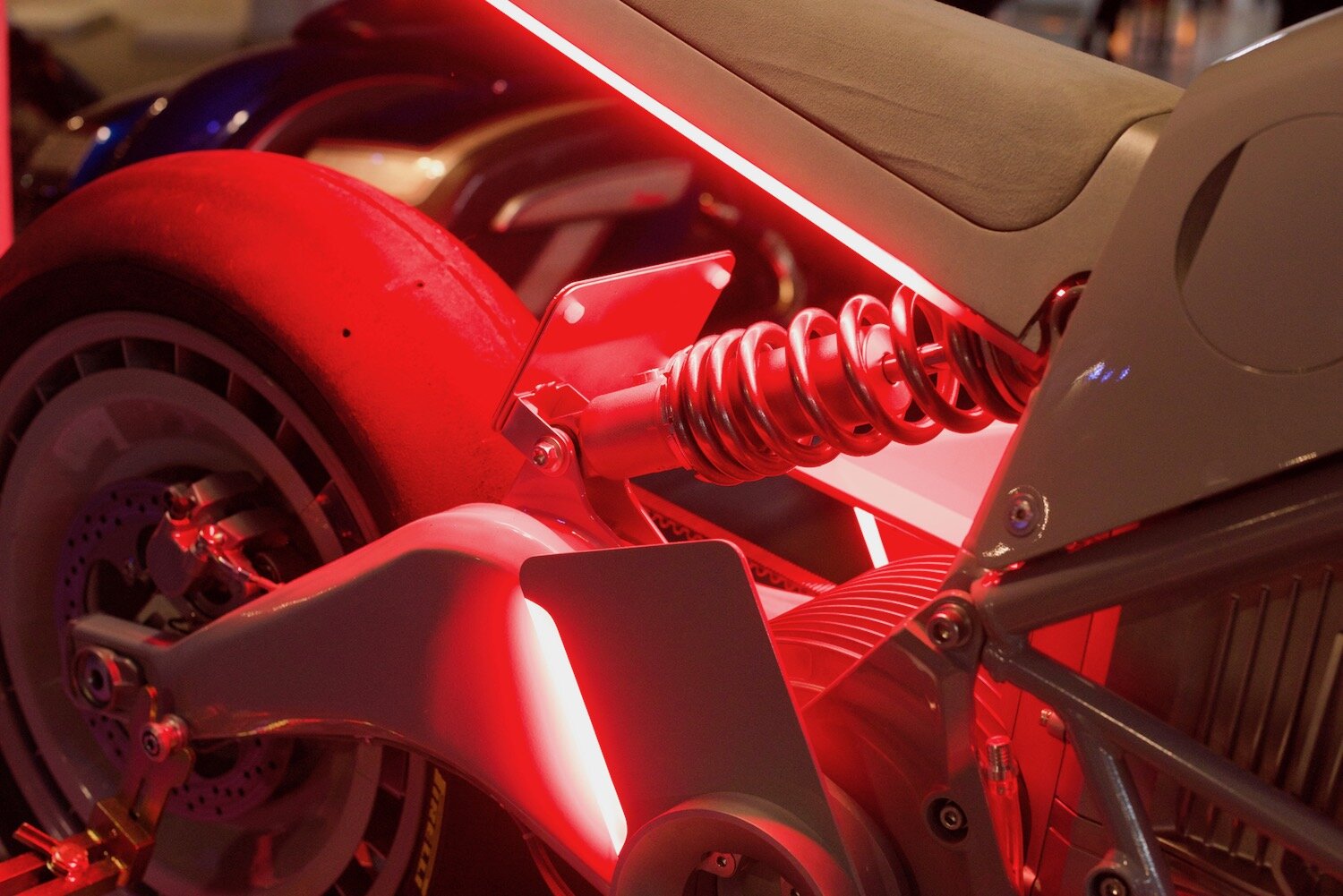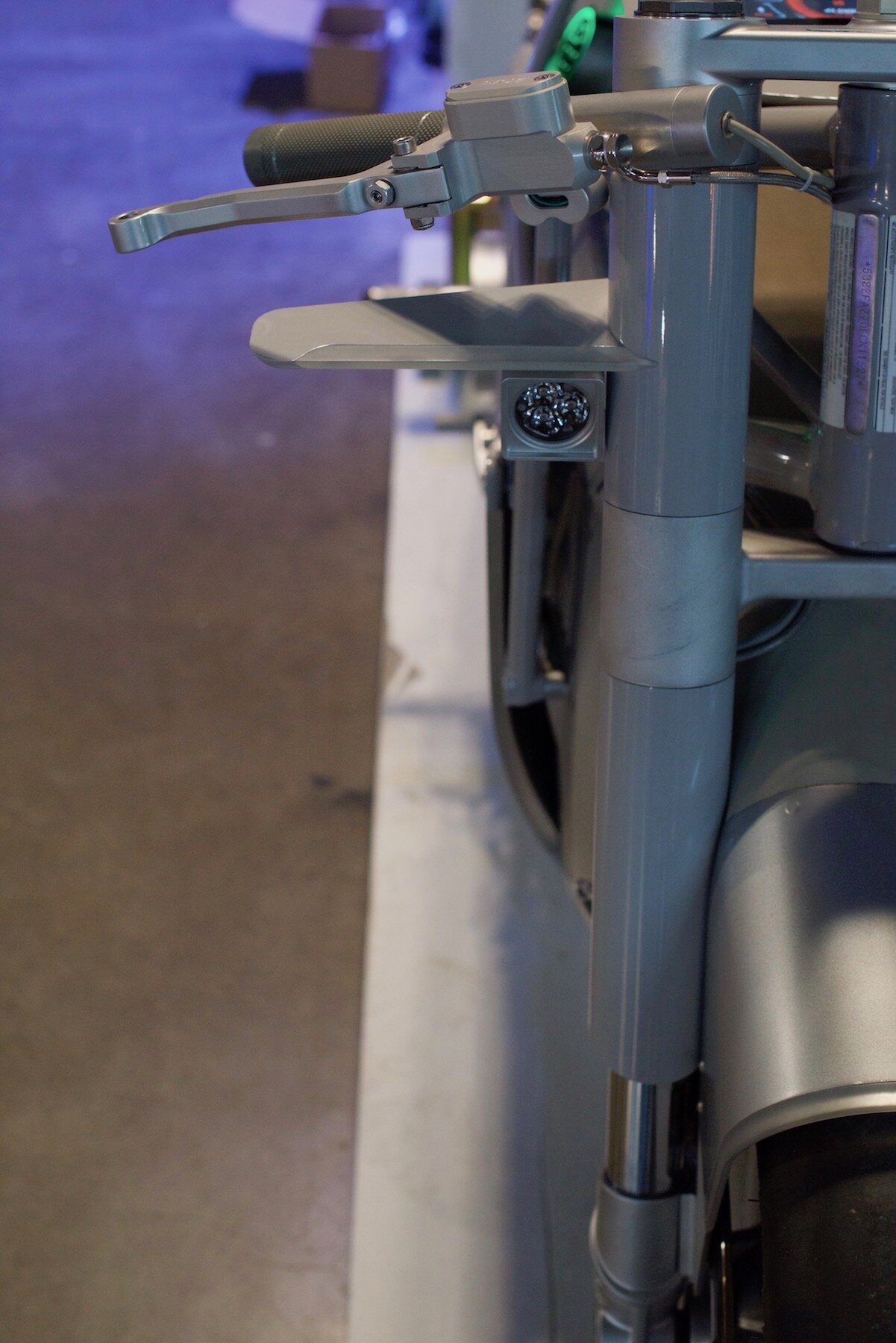Parallel Reality
One Moto hero. The Untitled Motorcycles Zero XP
Words/Photos-Mike Blanchard
I ran into the San Francisco-based designer and builder Hugo Eccles late on the last day of the One Moto Show 2020. His UMC Zero XP electric superbike was one of the stars of the show. It was displayed front and center as you walked into the main display hall. The show was basically over and we were at the other end of the building, but Eccles took the time to walk back to the bike and talk about his new build.
Eccles, a trim fellow with an engaging smile and an open and positive manner, is a graduate of the Royal College of Art in London. He has a seriously impressive CV as a designer and creative director at some of the top firms in the world. Along with partner and fellow designer Adam Kay, Eccles is the founder and director of Untitled Motorcycles, UMC, and legitimately one of the brightest designers in the moto world.
The company, split between London (Kay) and S.F. (Eccles), designs and builds custom motorcycles for private clients as well as brands like Ducati, Moto Guzzi, Triumph, Yamaha and now Zero. Each of the partners has his own client list (and a long backlog of work) but they collaborate on joint projects and stay in touch regularly to compare notes and provide support.
Eccles’ work has precision and finish that are a level above most custom builders. The XP is superbly realized and features a raft of clever design details, each flawlessly constructed and integrated into the overall concept. Many of the bike’s elements serve double duty, which helps keep the whole package clean and uncluttered. Because it was commissioned by Zero, Eccles had the benefit of access to company engineers as he worked on the bike’s cutting edge powertrain and control components.
One of Untitled’s signature builds, the Ducati-based Hyper Scrambler (in fact a short-run production model for UMC) caught the eye of the braintrust at Zero. “I started working on the XP in May of 2018 and Zero gave me free rein, carte blanche,” said Eccles. “They were big fans of the Hyper Scrambler.”
The Zero XP is based on the recently released Zero SR/F, which is a serious contender for baddest bike around, electric or not. The SR/F produces 140 -foot-pounds of torque and has a factory-limited top speed of 124 mph, with a range of 160 miles in stock form and a recharge time of 80 minutes. Even though the top speed seems tame by the standards of race replicas like the Ducati Desmosedici or Aprilia RSV4. Eccles says, “It has a shit-ton of power. And it’s seamless.” For comparison the 214 horsepower Aprilia is rated at 90 foot-pounds of torque.
After our talk at One Moto we were planning to get together in San Francisco to dig deeper into the XP and Untitled Motorcycles. However, due to the COVID-19 crisis and the resulting quarantine orders, I thought the interview we did at One Moto would have to suffice for the moment. We look forward in the future to having a longer conversation with Mr. Hugo Eccles.
The XP is painted with the military spec finish/color AMS 36375. The square section in the middle is the battery. The electric motor is mounted low right behind it driving the belt.
Rust. How did this project begin?
“So Zero approached me. I thought, ‘Wow! What an opportunity.’ This is a bike that Zero spent three years developing. I got to see it 10 months before its release. I’m the only custom builder that has worked on a factory-endorsed SR/F. And have an opportunity to look at the design of a motorcycle from first principles.
It doesn’t make any sense for an electric bike to mimic gasoline. It doesn’t carry gasoline, it doesn’t have an exhaust. It’s a very different animal. Why should you mimic that? I started thinking there were parallels or similarities with the 1900s when gas bikes were coming out.”
Rust. The world was wide open. It could be anything.
“It could have been anything. We are at this point with electric. You know, we really are. And that got me thinking: We’re not very far from a parallel reality where we have electric cars. You know, the first cars were electric. And we are going to be electric. The gas industry had this huge political lobby and they pushed the industry towards gas cars.
This is not intended as a future bike; this is a 2020 bike from this parallel reality. If we had been developing bikes that were electric for 135 years where would they be now?
So the interesting thing is also, for me, because it’s from this imagined present, it also has an imagined past. It’s an ex-race bike that’s been retrofitted for the road.”
Rust. So you develop a back story to go with the bike? So you know where you want to go.
“Oh yeah. It trickles all the way down.” (Hugo mimics a waterfall with his hands)



Rust. What did you find doing electric that you needed to do, a reference if anything, from motorcycling’s past, to make people want this?
“That’s an interesting question. One of the interesting things about doing a bike from a parallel present was I didn’t have to reimagine. It’s a parallel reality so it has all the same physics, the same economics, so I could use conventional suspension. I didn’t really want the conversation about some weird front end that I had built.
The interesting thing about electric is there is not a lot you need to retain. There are typical things like foot pegs, heel guards, seat, handlebars. You don’t need a gas tank but you do need panels to squeeze with your knees for control. I started thinking about control surfaces and what would the machine-control surfaces look like. I started thing about MotoGP bikes. They’re playing with winglets and canards.”
Rust. The front turn signals are super MotoGP, super F1.
“There is a diffuser in the belly pan; I’m a big fan of WTAC. There’s not really a huge amount of justification for it but I just love turbo-fan wheels. There is a whole category of men who love turbo-fan wheels. It is so funny. There is a certain group of the male population that just go, ‘Oh.’ It made sense in this kind of aerodynamic package.”
Eccles is a big fan of the turbo-fan wheel.
Rust. It’s very modern-looking. You have all the rhyming shapes of the turbo fans, the fans.
“It was also this idea of streamlining. The belly pan runs really close to the rear wheel. It’s all about things being minimal but very close, finely tuned and toleranced.”
Rust. It has a very precision look to it that’s clean.
“The lights function as brake lights and blinkers. [Ed.: The bike features lighting in the bodywork that can be set to rotate through different colors. This gives the bike a constantly changing color scheme.] The grey is actually an aerospace material, specification AMS 36375; it’s called Ghost Grey. It’s a color that the U.S. Navy used for their experimental aircraft. It is intentionally quite nondescript when the bike is off. When it’s on it almost comes alive.
There are these edges that you hadn’t noticed before that suddenly have life. Because when it’s moving an electric bike is quite noisy. It sounds like a Star Wars Tie Fighter. When it’s static, there is very little indication that it’s active. With 140 foot-pounds, that’s potentially a quite dangerous thing. This thing is a missile. The XP will do zero to 125 (which is the electronic limit, 200 KMH) in like six seconds or something. And it’s linear. And it’s uninterrupted by gear changes. It’s like, ‘Whoooop!’ This thing is a little land-based jet. A surface-to-surface missile.
“It has a shit-ton of power.”
And that partly inspired wanting to create a different aesthetic. I think if you create a bike that looks conventional, you are expecting a conventional experience. … Riding an electric bike is not a conventional experience. It is not a gas bike with a different motor in it. It is a whole different kettle of fish.”
Rust. I love the origami feel where you have the battery package and the line to the seat and then the folded plane over the top. It’s very architectural.
"All the panels are designed to look like they’re not really attached to the frame. The bike is figuratively and physically a disassembled motorcycle. Everything is slightly floating off of each other. There are two forms inside of it. There is the form that is kind of like the electric, digital component and the other bit which is the analog. These two worlds are meshed together. I wanted, ultimately, for the project to do two things. One, for the project not to mimic gasoline. And, I wanted to expose and celebrate the electric and do it in a completely joyful and unapologetic way.”
Hugo Eccles stands behind his work.
Check out Untitled Motorcycles at www.untitledmotorcycles.com
Follow them on Instagram @untitledmotorcycles






